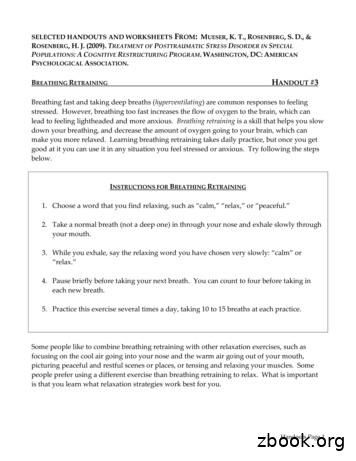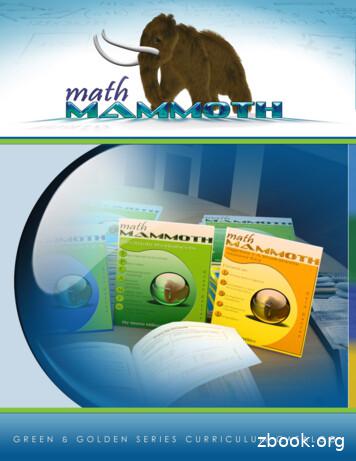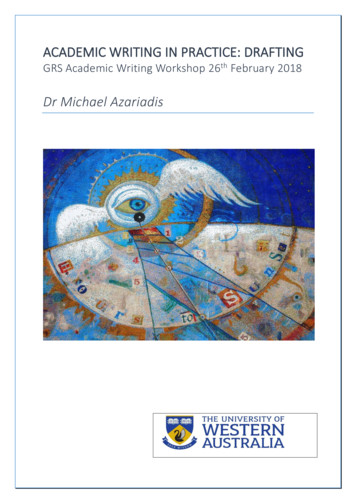PART IV: CLASSROOM HANDOUTS, WORKSHEETS & VISUALS
Mapping the Beat: A Geography through Music CurriculumArtsBridge AmericaCenter for Learning through the Arts and Technology, UC IrvineFunded by National Geographic Education FoundationThis curriculum unit for Mapping the Beat: A Geography through Music Curriculumwas developed by the ArtsBridge America program at the University of California, SanDiego with support from a grant from the National Geographic Education Foundation.The original curriculum was compiled by Dr. Nina Eidsheim and William Boyer (2002).The extended unit below was created by Dr. Timothy Keirn and the ArtsBridge Americaprogram at the California State University, Long Beach (2009). Curriculum complied byJasmine Yep for the UCI Center for Learning through the Arts and Technology.Other on-line resources, videos and lesson plans complied by the UC Irvine Center forLearning through the Arts and Technology are available at: http://www.clat.uci.edu/.LESSON: NATIVE AMERICAN CULTURES ON THE PLAINSIncluded in this document are:Part I: LessonPart II: On-line resources for use with lessonPart III: Supporting MaterialsPart IV: Classroom Handouts, Worksheets and VisualsPART IV: CLASSROOM HANDOUTS, WORKSHEETS & VISUALSSelect resources are attached to this lesson plan. Please refer to the resources provided inPart II and III for additional materials.All Mapping the Beat materials available on-line at www.clat.uci.edu. Map of North Dakota indicating location of Knife River People arckMandan/knifelodges/index.htm ; Catlin’s Paintings of the Mandan ii iii iv v vi1. http://freepages.family.rootsweb.ancestry.com/ bowen/images/mandanvillage.jpg2. Buffalo-Bull-Dance-OfThe-Mandan-Tribe.jpg
3. http://www.imageenvision.com/stock photo/details/0003-0703-07114570/hidatsa native american man called rabbit head4. n/catlin highlights2.cfm?StartRow 105. ource Guide Chapters/PictAmer Resource Book Chapter 6B.pdf Map of Indian Tribes in America Prior to European Colonization ade/pg32.pdf Map of Indian Reservations 2000 viii & 2002 ixhttp://www.census.gov/geo/www/maps/aian wall map/us ommons/0/02/Bia-map-indian-reservationsusa.png Pictures of Mandan/Hidatsa flutes x , whistles xihttp://en.wikipedia.org/wiki/Native American ive-american-flute.jpg Lewis and Clark’s Observations of the Mandan ood.pdf “Reading a Trade Map” for each student or lead class discussion of on-line trademap ismarckMandan/knifelodges/index.htm om/ bowen/images/mandanvillage.jpg ; /www.imageenvision.com/stock photo/details/0003-0703-07114570/hidatsa native american man called rabbit /catlin/catlin highlights2.cfm?StartRow Resource Guide Chapters/PictAmer Resource Book Chapter n wall map/us http://en.wikipedia.org/wiki/Native American ative-american-flute.jpg ;http://2.bp.blogspot.com/ /archive/knri/teach/map4.htm
Mapping the BeatLesson: Native American Cultures on the PlainsNative American flute crafted by Chief Arthur Two-Crows, 1987http://en.wikipedia.org/wiki/Native American fluteThe Native American flute has achieved some measure of fame for its distinctive sound, used in a varietyof New Age and world music recordings. The instrument was originally very personal; its music wasplayed without accompaniment in courtship, healing, meditation, and spiritual rituals. Now it is playedsolo, along with other instruments or vocals, or with backing tracks both in Native American music and inother styles. There are two different types of Native American flute, the plains flute and the woodlandsflute, each with slightly different construction.
Mapping the BeatLesson: Native American Cultures on the PlainsMandan lodge, North Dakota. c. 1908.Mandan Lodge. From the Edward S. Curtis Collection Library of ils:@FILREQ(@field(SUBJ @od1(Mandan Indians-Structures--1900-1910 )) @FIELD(COLLID ecur))http://en.wikipedia.org/wiki/File:Mandan lodge.jpg
LESSON: NATIVE AMERICAN CULTURES ON THE PLAINS Included in this document are: Part I: Lesson Part II: On-line resources for use with lesson Part III: Supporting Materials Part IV: Classroom Handouts, Worksheets and Visuals PART IV: CLASSROOM HANDOUTS, WORKSHEETS & V
classroom classroom 30 31 classroom 32 classroom 33 classroom 35 classroom 36 classroom 37 classroom 38 classroom 39 classroom 40 classroom 41 classroom 42 classroom 43
Worksheets and handouts The worksheets and handouts are designed to be easy to photocopy. Worksheets are meant to be used during the workshop whilst doing an activity, individually or in groups. At times worksheets will need to be updated before the session with the mo
Handouts Page 1 SELECTED HANDOUTS AND WORKSHEETS FROM: MUESER, K. T., ROSENBERG, S. D., & ROSENBERG, H. J. (2009). TREATMENT OF POSTTRAUMATIC STRESS DISORDER IN SPECIAL POPULATIONS: A COGNITIVE RESTRUCTURING PROGRAM.WASHIN
MONEY DECISIONS LESSON 1: WHAT'S MY FUTURE? LESSON 1: WHAT'S MY FUTURE? Preparation Review the entire lesson. Make copies of handouts you plan to use for participants. If using 3-ring binders to organize and store handouts, 3-hole punch the handouts. Collate the handouts into one set for each participant.
WORKSHEETS WORKSHEETS WORKSHEETS WORKSHEETS WORKSHEETS WORKSHEETS 16. ¡ Vamos a jugar al bingo! Have your students write body parts in the boxes as they choose. The teacher lists the body parts at random and the first student that gets blackout says “BINGO!” The person that gets bingo
Grade 3 Worksheets Grade 4 Worksheetts Grade 5 Worksheets Grade 6 Worksheets Grade 7/8 Worksheets (pre-algebra) Algebra 1 Worksheets 4 4 5 5 6 6 Math Mammoth Green Series Measuring Multiplication & Division Numbers & Operations Fractions Decimals Geometry Integers Ratio, Proportion & Percent Statistics 7 7 7 8 8 8 9 9 9
order of operations worksheets with answers. order of operations worksheets with answers, printable order of operations worksheets with answers, order of operations word problems worksheets with answers grade 5, order of operations with decimals worksheets with answers, order of operations
Academic writing is iterative and incremental. That is, it is written and rewritten numerous times in a number of stages. Pre-writing: approaches for getting the ideas down The first step in writing new material is to get your ideas down without attempting to impose any order on them. This process is often called ‘free-writing’. In “timed writing” (Goldberg 1986) or “free writing .























